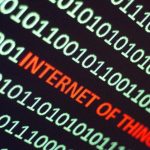When a total solar eclipse darkens the skies over parts of the United States on April 8, 2024, researchers will seize the opportunity to delve into the pronounced effects that take place within the ionosphere, a high-altitude layer of the atmosphere that becomes electrically charged by solar radiation. A trio of NASA-financed studies will harness the capabilities of radio technology to scrutinize the ionospheric reactions to this unique celestial event, which significantly intensifies the phenomenon akin to a “false night” in this upper atmospheric region.
Ionosphere’s Invisible Influence
The ionosphere plays a critical role in communication technologies, including long-range AM and shortwave radio transmissions. Due to solar energy, atoms in this layer split into electrons and positive ions. This separation and recombination process, influenced by the presence or absence of sunlight, results in a daily fluctuation in the ionosphere’s density. As such, a total solar eclipse provides a valuable setting to observe the ionosphere’s behavior in unique conditions.
The SuperDARN Initiative
SuperDARN, a global network of radars, will take advantage of the eclipse to monitor the ionosphere’s dynamics over the United States. These radars will operate in specialized modes to capture detailed measurements of changes in ionospheric conditions, such as density and temperature variations. Led by Bharat Kunduri from Virginia Tech, researchers are gearing up to juxtapose SuperDARN data with computer models, aiming to unravel the ionospheric response to the eclipse’s temporary darkness.
HamSCI’s Citizen Science Approach
The Ham Radio Science Citizen Investigation (HamSCI) taps into the enthusiasm of amateur radio operators to gather data on how the eclipse affects radio communications. Coordinated by Nathaniel Frissell of the University of Scranton, this experiment encourages operators nationwide to chart their signal quality before, during, and after the event. Their observations will contribute to a broader understanding of the ionosphere’s reaction to eclipses, supplementing findings from previous instances.
The RadioJOVE project, another citizen science initiative, will focus on capturing solar radio bursts. These bursts typically penetrate the ionosphere, providing an indirect measure of its properties. Observers aim to improve upon previous recordings from the 2017 eclipse, with the guidance of Chuck Higgins of Middle Tennessee State University, and anticipate their efforts will enrich long-term research efforts.
The 2024 solar eclipse offers an invaluable natural laboratory for NASA-funded projects to examine the ionosphere. As these various initiatives gear up, the anticipation grows for the insights they will provide into the mysterious workings of our planet‘s upper atmosphere during such a dramatic cosmic event.










